With millennia of history accumulated over the land that now encompasses Pakistan, several places of historical importance have been discovered all over the country. The country’s timeless relics can be found in all sorts of places in the form of forts, castles, and palaces. These palaces in Pakistan not only connect the past with the present but also double as sites of cultural recreation.
Graana.com, Pakistan’s smartest property portal, features a complete guide on palaces in Pakistan.
Palaces in Pakistan
Pakistan has a lot to offer in terms of cultural artefacts and historical landmarks. Ranging from ancient civilisations to the Mughal Empire, the region has seen the rise and fall of countless nations. The remnants of these societies can be found in the form of palaces and mahals dotted throughout the country. Following is a list of these Palaces in Pakistan.
Noor Mahal
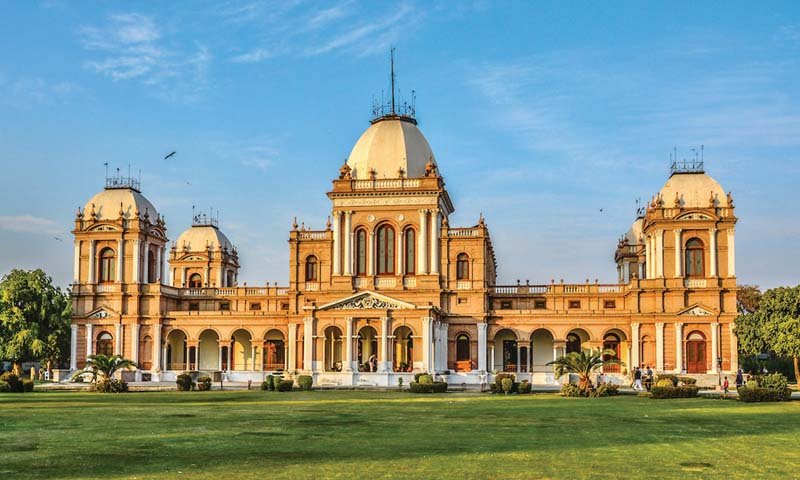
Located in Bahawalpur, Noor Mahal is an Italian chateau-style palace that was built in 1872. The palace also holds significant historical value as it belonged to the Nawabs residing in the Princely State of Bahawalpur. According to historians, the palace was built by Sir Sadiq Abbasi for himself – the Amir of Bahawalpur from 1907 to 1966.
Currently, the palace comes under the jurisdiction of the Pakistan Army, and it is used as a guest house for hosting foreign delegations and guests. However, the Mahal is still open for the public to visit and revere in the beauty of this landmark.
Sadiq Garh Palace
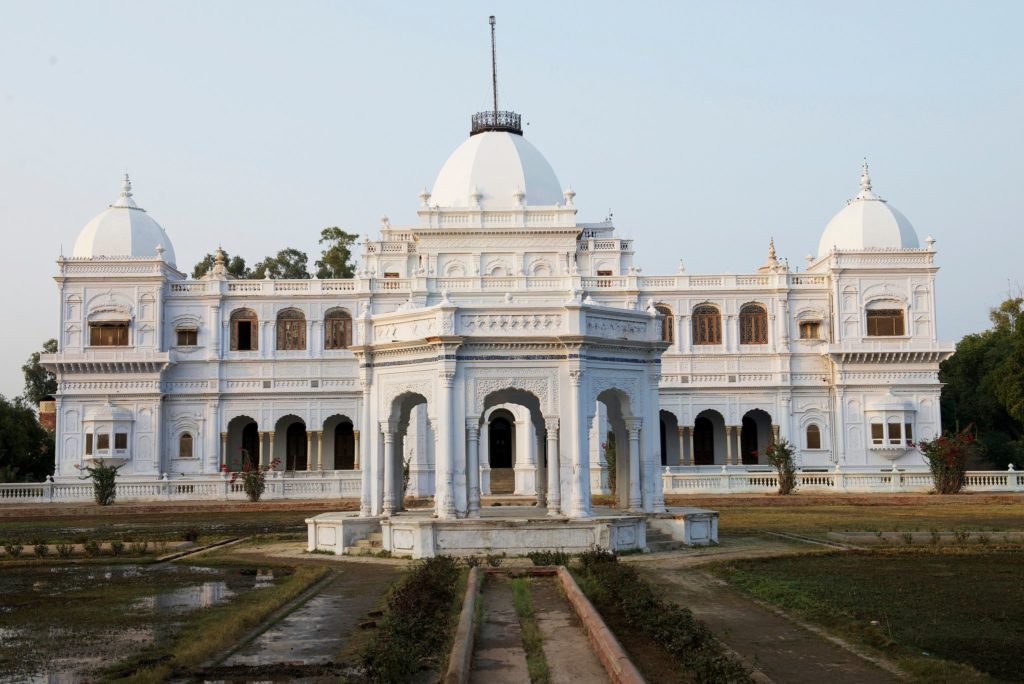
Another one of Bahawalpur’s historical landmarks, the Sadiq Garh Palace has been around for almost 175 years, and it is the product of the labour of almost 1500 men. Moreover, the building covers a vast area, as it comprises almost 120 rooms, each based on a unique culture from around the world.
The middle of the palace consists of a ‘Darbar’, a place where the Nawabs would talk to their subjects. The palace also housed several art pieces and cultural artefacts, however, only a few remnants remain today. Moreover, this palace in Pakistan is open to the public, allowing visitors to get in touch with the cultural heritage of the region.
Faiz Mahal
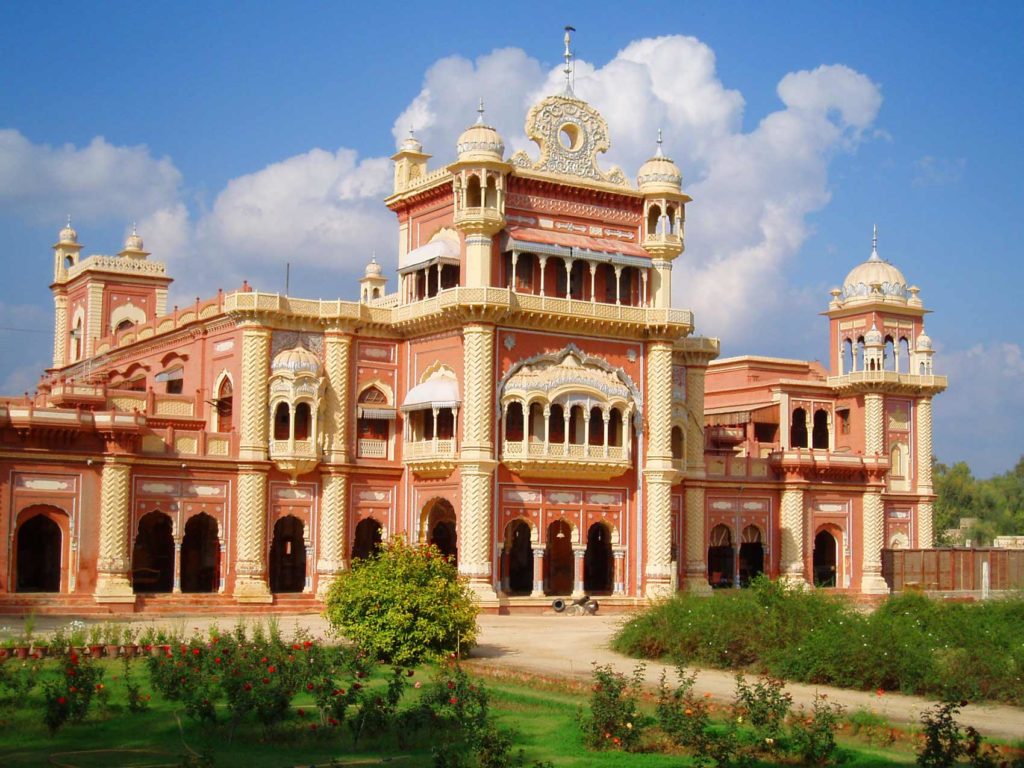
Located in Khairpur, Sindh, the Faiz Mahal was a royal palace complex that served the purpose of being the principal building of the Talpur Monarchs’ rule during the Khairpur Dynasty. The palace is still in use today by the heir of the last Talpur Monarch, H. H. Mir Ali Murad Khan Talpur II. Since the state of Khairpur was abolished in 1955, the palace lost its political importance, and simply became the residence of the Talpur Heirs.
Being one of the largest historical Palace in Pakistan, the Faiz Mahal consists of a ruling chamber, along with 16 waiting rooms for guests and courtiers. Moreover, the palace had a ‘Haithi Khana’, for the royal elephants of the monarchs.
Sheesh Mahal
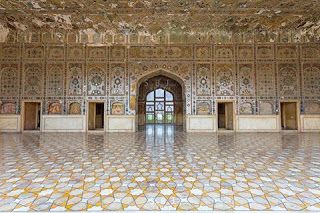
Famously known as the ‘Crystal Palace’, Sheesh Mahal is renowned for its intricate white marble walls, etched with delicate mirrors. The palace dates back to the Mughal era when the foundation of the Lahore Fort was laid in 1566. However, the actual palace was built later on by Shah Jahan, who brought in expert craftsmen and artisans to construct an unparalleled palace.
The palace reflects the distinctive architecture of Shah Jahan’s era with its extensive use of white marble throughout the building. This beautiful palace in Pakistan is also considered a UNESCO world heritage site, as it comes under the premises of the Lahore Fort complex.
Mohatta Palace
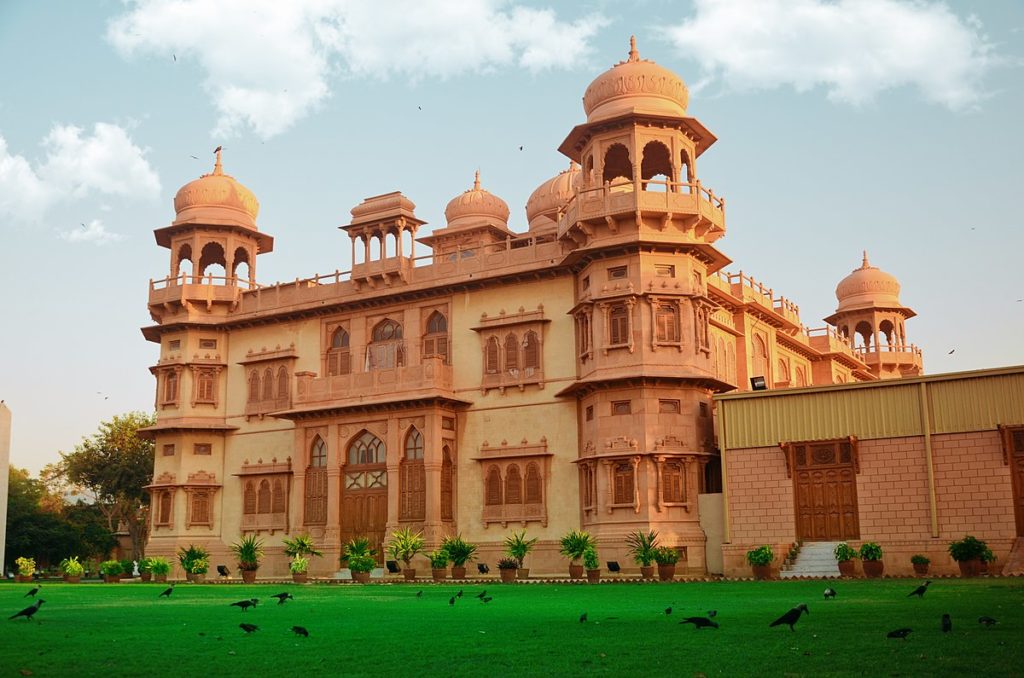
Constructed in 1927 by a Hindu businessman, the Mohatta Palace sits in the seaside locality of Clifton, Karachi. The building served as a summer home for the Mohatta family, before they permanently left for India in 1947. The palace was constructed based on Rajasthani architecture, which has also been transcribed through the use of stones and marble.
In 1947, the government of the new-born country acquired the palace to house some of its ministries. However, in 1995, the Government of Sindh took ownership of Mohatta Palace and converted it into a museum for the public to visit.
White Palace
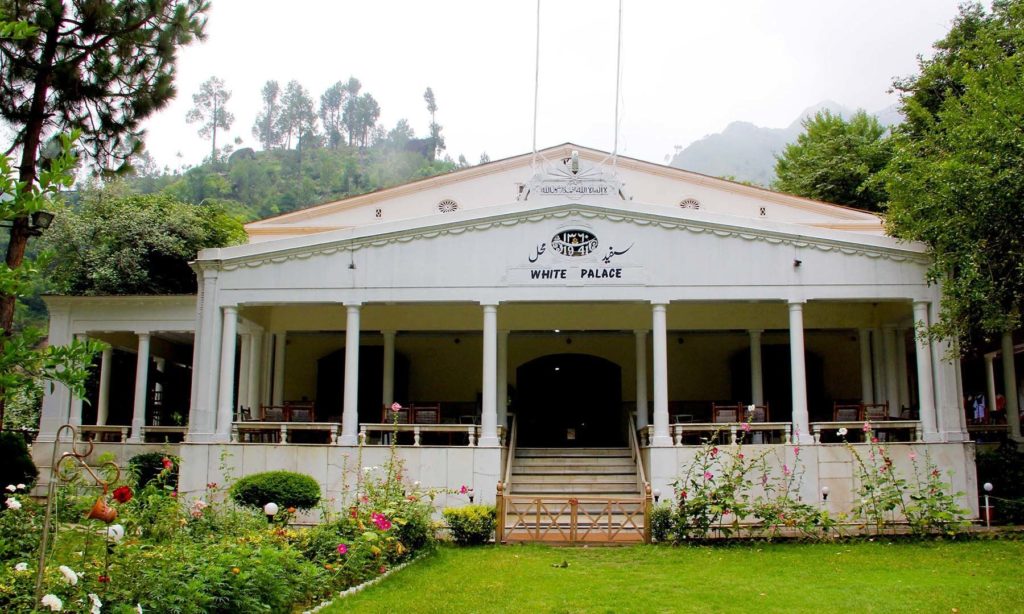
Located in the hills of Swat, the White Palace was built in 1940 by the King of Swat, Miangul Abdul Wadud. The palace was constructed using white marble, hence the name ‘White Palace’. It is said that the beauty and serenity of the hills persuaded the King to have a summer resort constructed there. Construction materials for the palace were brought from various regions, such as Bronze from Belgium and marble from Agra.
The main building of this palace in Pakistan comprises a Royal Bedroom and 24 decorated rooms. Owing to the palace’s prime location, Queen Elizabeth II visited the resort with her sons in 1961. Only a few places in the country have been honoured to host such revered foreign delegates, and the White Palace is one of them.
Pakistan offers a myriad of historical landmarks that reflect the region’s rich cultural and political history. These palaces and mahals are one such example, symbolising centuries of historical events that took place over these lands. Visit these palaces in Pakistan and get in touch with the country’s vast cultural history. For more information, visit Graana blog – Pakistan’s first online real estate marketplace.




